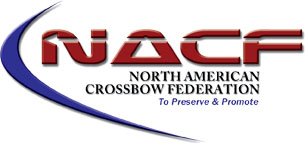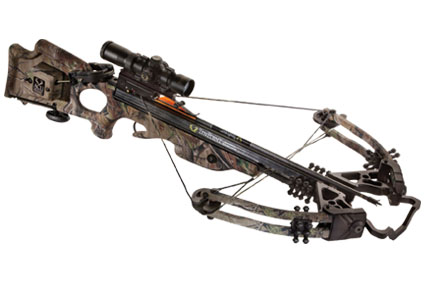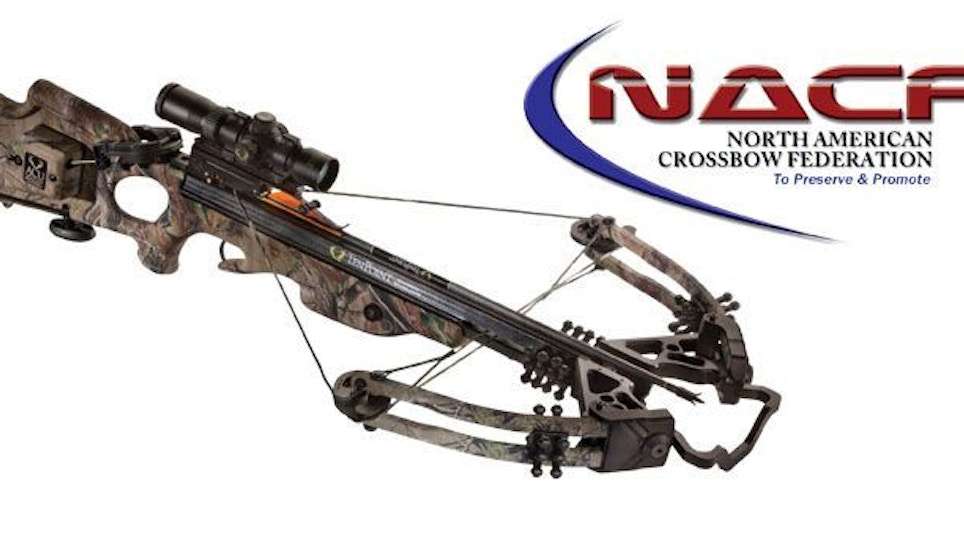 When state wildlife agencies and lawmakers want to step back and objectively study the facts surrounding crossbows and crossbow hunting, they often turn to the North American Crossbow Federation for emotion-free information.
When state wildlife agencies and lawmakers want to step back and objectively study the facts surrounding crossbows and crossbow hunting, they often turn to the North American Crossbow Federation for emotion-free information.
The NACF—sponsored by Barnett Outdoors LLC, Excalibur Crossbow Inc., Horton Archery LLC, TenPoint Crossbow Technologies, and Parker Compound Bows Inc.—advocates for crossbow use for recreation and hunting by all licensed hunters during seasons in which archery equipment is permitted.
To help people understand crossbows and their actual impacts on hunting, the NACF created a report titled, “Fundamentals of Crossbow Dynamics and Usage.” This 37-page document discusses crossbow functions and ballistics, the crossbow’s national expansion, and its implications for wildlife management using data compiled by wildlife agencies across North America.
The report is updated regularly as crossbow regulations change, and it can be found at the NACF’s website, www.northamericancrossbowfederation.com. After logging on, click for more information under the “Information and Education” tab.
Never Customize A Crossbow!
Most archery pros expertly squeeze peak performance out of today’s high-tech compound bows by adding custom strings, twisting existing strings, or tweaking a tiller just so—all in the interest of putting a smile on a customer’s face or some “upgrade” money in the till. But when they put a crossbow on the bench, they must do everything by the manufacturer’s book, or risk ruining the crossbow and someone’s health.
 “We ask you to never customize anything on your crossbow,” says Paul Vaicunas, former vice president of Parker Crossbows and new president of Maximus Crossbows. “Do you think compound bow manufacturers would warranty their 70-pound bow if you shot 150-grain arrows from it? Well, the average crossbow with a 175-pound draw weight often shoots 400-grain arrows. That’s not much more than 2 grains per pound of draw weight. That’s almost a dry-fire situation every time you shoot.
“We ask you to never customize anything on your crossbow,” says Paul Vaicunas, former vice president of Parker Crossbows and new president of Maximus Crossbows. “Do you think compound bow manufacturers would warranty their 70-pound bow if you shot 150-grain arrows from it? Well, the average crossbow with a 175-pound draw weight often shoots 400-grain arrows. That’s not much more than 2 grains per pound of draw weight. That’s almost a dry-fire situation every time you shoot.
“You can’t mess with that formula by attaching your custom string that’s a quarter-inch too short. If you do, you take that crossbow from 175 to 225 pounds. Its components can’t take it. That’s how you start breaking bows and giving customers a negative crossbow experience.”
What’s another taboo in crossbow work? “Never sand or file a trigger to make it 1 or 2 pounds lighter,” Vaicunas said. “That’s a real ‘danger-zone’ problem. It’s also an exposure problem for you and for us. Leave those triggers alone. That latching engagement is holding back 175 pounds. We work very hard to adjust the triggers to be 3 to 3.5 pounds, with almost no travel. You get a real positive, solid squeeze off the trigger. They work just great when they leave the factory.”
Recent Growth Has Been Good
Crossbow sales weren’t the only things that remained stagnant during the final quarter of the 20th Century. Until the crossbow market broke loose the past 10 years, crossbow technology also languished.
“The crossbow market was pretty much flat until 2002 because there were only about five markets: Ontario, Ohio, Arkansas, Wyoming, and British Columbia,” said Paul Vaicunas, new president of Maximus Crossbows. “You’d be surprised to learn how small crossbow manufacturers really were in 2001. They couldn’t invest in a lot of capital expenditures. They didn’t have the budgets. They couldn’t afford to invest a quarter-million dollars in a new mold every year.”
As the market crossbow expanded, the number of crossbow manufacturers not only grew, the existing manufacturers grew larger. Some are now the size of compound-bow manufacturers.
“That allows them to start driving more technology and research,” Vaicunas said. “You’re now seeing crossbow manufacturing and technology updates changing very quickly. They’ll develop more and better products in the years ahead.”
An obvious example of those advances is faster speeds and shorter axle-to-axle measurements. “Four years ago, the average width on crossbows was 26 inches, and now it’s under 20 inches,” Vaicunas said. “Five years ago, I don’t think any crossbow shot faster than 300 feet per second. There were a couple of ‘race-car’ models, but they weren’t in the commercial lines. Today, 90 percent of crossbows shoot over 300 fps.”
What’s next in crossbow technology? “I don’t think we’ll see all these different cams and cam options you see on compound bows,” he said. “What you will see are revolutions in the frame. They’ll become smaller and more compact. After that, the next big challenge will be making crossbows quieter.
“The challenge for dealers will be fully understanding each crossbow’s features, not their technology. I doubt the technology will leave dealers behind.”






